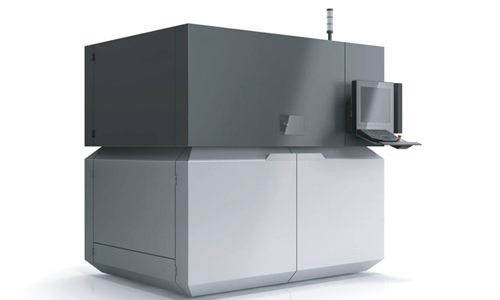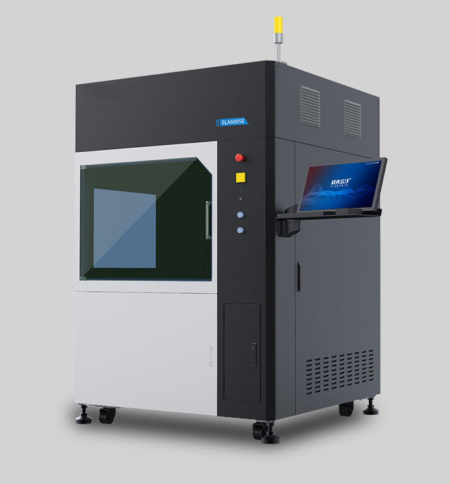What is SLS
SLS is abbreviation of Selective Laser Sintering, which is an additive manufacturing process belong to Powder Bed Fusion family. In SLS process, a laser system is applied to sinter polymer powders, fuse particles together, and create parts layer by layer. The SLS materials are thermoplastic polymers with granular form.
SLS technology is widely used for function component prototyping and small volume production. SLS provides high design freedom, high accuracy and excellent mechanical properties. All designers should consider its key benefits and limitations, in order to maximize its technology capabilities.


How SLS Work
SLS manufacturing process:
- The polymer powder on build area will be heated by with temperature below melting. Then a recoating blade spreads a thin layer of polymer powder over build platform.
- A CO2 laser system will scans next layer contour and sinters polymers particles together. As the entire cross section is scanned, the sintered parts is fully solid.
- Once a layer is complete, the build platform will move downwards and the blade coat the surface again. Repeat these processes until the final part is complete.
After this printing process, the parts are encapsulated in polymer powders, we need to wait for powder bin cooling down then unpack sintered part. The parts will be cleaned with compressed air other blasting media, in order to be ready for usage or post-processing. The remaining polymer powder can be collected for re-usage.
Characteristic of SLS
SLS machine parameter
As in SLS, all process parameters are preset by machine manufacturers. The normal default layer height is ranging from 100 to 120 microns.
The key advantage of SLS technology is that there is no need of support structures. The unsintered polymer powder will provide necessary support. So SLS is able to create freedom geometries, which are impossible to produced by other methods.
Layer adhesion
The bond strength between layers in SLS process is excellent, SLS printed parts have isotropic mechanical properties.
PA 12 or Nylon 12 are the most common material in SLS, we show its mechanical properties as following with comparison of bulk nylon:
| X-Y direction | Z direction | Bulk PA 12 | |
| Tensile Strength | 48 MPa | 42 MPa | 30-50 MPa |
| Tensile Modulus | 1650 MPa | 1650 MPa | 1270-2500 MPa |
| Elongation at Break | 18% | 4% | 120-300% |
SLS parts of Nylon 12 standard polymide powder have higher tensile strength and modulus than bulk materials. However, in reason of the internal porosity in final parts, they are more brittle with lower elongation at break. As a normal SLS part is 30% porous, it has characteristic grainy surface finish. It also determine that SLS parts can absorb water and be easily dyed with a wide range of colors. But for application in humid environment, these parts require special post-processing.
Shrinkage & Warping
As in SLS process, once the new sintered layer cool down, its dimensions will decrease and the internal stresses will buildup, and finally pull the underlying layer upwards. This give rise to SLS parts are susceptible to shrinkage and warping.
There is 3.0% to 3.5% typical shrinkage in SLS, we need to take this into preparation phase and adjust design size accordingly.
Large flat surface is most likely to warping. We can mitigate this issue by orientating parts vertically in the build platform. While the best solution is to reduce parts volume by minimizing flat area thickness and introducing cutouts. This will reduce overall cost with less materials usage.
Oversintering
Oversintering will occur once radiant heat fuses unsintered polymer powder around features. This will result to detail loss of small features, such as slots and holes. Oversintering depends on wall thickness and feature size, slot wider than 0.8 mm and holes with diameter lager than 2 mm can be printed successfully without fear of oversintering in SLS.
Powder removal
As SLS technology doesn’t require support material, so hollow section can be printed easily and accurately. Hollow sections will reduce parts weight and cost as less material usage. Escape holes are needed to remove unsintered powder form inner component sections. We recommend at least 2 escape holes with minimum 5 mm diameter in your design.
Fully solid parts should be printed as high stiffness is required. Another alternative way is hollow design without escape holes. In this method, packed powder will be entrapped in parts, increase parts mass and provide additional support without effect on building time. Internal honeycomb lattice structure can be applied in hollowed interior to increase component stiffness. Hollowing is an effective way to reduce warping.
Common SLS Material
Polyamide 12, also known as Nylon 12 is the most widely material applied in SLS. There are also other engineering thermoplastics like PA11 and PEEK. Various additives like carbon fibers, glass fibers or aluminum can be used to improve the SLS parts mechanical and thermal behavior. SLS materials with additives are more brittle and high anisotropic.
| Material Type | Characteristics | |
| Advantage | Disadvantage | |
| Polyamide 12 (PA 12) | Good mechanical propertiesGood chemical resistance | MatteRough surface |
| Polyamide 11 (PA 11) | Fully isotropic behaviourHigh elasticity | |
| Aluminium-filled nylon (Alumide) | Metallic appearanceHigh stiffness | |
| Glass-filled nylon (PA-GF) | High stiffnessHigh wear & temperature resistance | Anisotropic behaviour |
| Carbon-fiber filled nylon (PA-FR) | Excellent stiffnessHigh weight-strength ratio | Highly anisotropic |
Post Processing
SLS parts have a powdery, grainy surface with easily staining. Various post processing methods can be used to improve high standard surface appearance, such as media polishing, dyeing, spray painting and lacquering. Functionality also can be enhanced by watertight coating or metal plating.
SLS Benefits & Limitations
SLS Benefits:
- SLS parts with good and isotropic mechanical properties are ideal for functional parts and prototypes.
- SLS parts without support are easily to produce complex geometries.
- SLS manufacturing capabilities is excellent for small to medium volume production.
SLS limitations:
- Industrial SLS system are widely available, it has longer lead time than other 3D printing technologies, like FDM and SLA.
- SLS parts have a grainy surface and internal porosity, post processing in required for smooth surface or water-tightness.
- SLS is not suitable for large flat surfaces and small holes, as they are susceptible to warping and oversintering.


